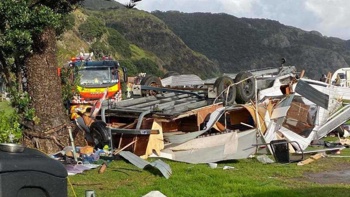Dunedin taxpayers have forked out a substantial amount to eradicate the region's wallaby population.
The New Zealand Taxpayers' Union confirmed that over $2.7 million has been spent on a wallaby control program that killed just 18 wallabies
This was divulged in an OIA to Biosecurity NZ by the Taxpayers' Union.
Taxpayers' Union Executive Director Jordan Williams says this was part of the Jobs for Nature scheme proposed during the Covid-19 pandemic, when mass unemployment was a concern.
"We're spending $153,000 per wallaby killed, or eradicated down in Otago. At that price, it would have been cheaper to get each one a private jet to send them back to Australia."
Biosecurity New Zealand Director Readiness and Response John Walsh issued the following:
As noted in our OIA response, wallaby control requires a mix of strategies in different places around the country. For example, wallaby numbers are greater in Canterbury and the Bay of Plenty and kill numbers are much higher (in the Bay of Plenty 2819 have been destroyed by shooting or bait station and in Canterbury 6665).
In areas like Otago and Waikato the focus is on surveillance because the populations are much smaller and we want to track each last one down. Surveillance is vital for tracking the remaining wallabies down. It is not wasted money, but saving the cost of any large future wallaby infestation.
We also know – as noted in the OIA response – that the counts in no way represent all the wallabies killed by the programme.
Due to their nocturnal nature and the remote landscapes that wallabies occupy aerial drops are often the best method of killing them. For example, toxic bait drops in remote areas are a very effective method for killing wallabies, but the nature of the terrain makes it extremely difficult to record actual kills.
- Greens want $1b for nature-based fund to save economy
- Budget 2020: $1.1b towards environment while creating jobs
Work by Manaaki Whenua Landcare Research to monitor two of the largest Aerial toxin operations targeting wallabies in Canterbury – using a combination of fixed-point thermal cameras, repeated transects with a thermal camera on an Unmanned Aerial Vehicle (UAV) or helicopter, and GPS collared wallabies - showed strong results. With the past two years post Aerial toxin operation results in Canterbury show a population reduction of over 90 percent.
LISTEN ABOVE
Take your Radio, Podcasts and Music with you










